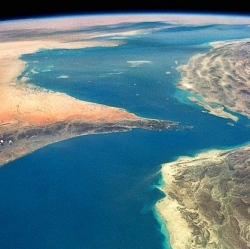
The Bigelow Expandable Activity Module (BEAM) aboard the ISS has successfully been inflated on the second try in three days. The habitat expanded to its full size after a nearly seven-and-a-half hour operation. NASA astronaut Jeff Williams slowly fed air into the module while being monitored by mission control in Houston.
Today’s successful deployment follows Thursday’s first attempt, in which the tightly packed fabric of the BEAM refused to expand as predicted when air was fed into it in one to five second bursts over a six hour period. Bigelow engineers speculated that this was due to the module being kept in storage for 15 months due to a delay in shipping it to the station. During this time, the fabric of the module may have settled more tightly on itself and generated more friction than anticipated.
At 9:04 am EDT, the second attempt was made after BEAM had been depressurized and the fabric allowed to relax for a day. During the deployment, Williams fed air into the module 25 times for a total of two minutes and 27 seconds. As the air was fed in, the shifting fabric let off load noises like corn popping as the module took on the shape of badly wrapped cornball.
In the meantime, engineers back on Earth carefully monitored BEAM’s interior pressure to make sure it wasn’t placing any loads on the ISS’s Tranquility module, where BEAM is docked.
After BEAM reached full size, Williams then activated the module’s automatic pressurization system that opened up eight interior tanks to bring the module’s interior pressure up to the station’s 14.7 PSI. When this was completed at about 4:35 pm EDT, mission control noticed a slight overpressure and instructed Williams to open an inspection valve in the module hatch to equalize the pressure between BEAM and the station.
BEAM will undergo a week of temperature and pressure tests before astronauts venture inside to install monitoring instruments. The module will remain attached to the ISS for two years as it is assessed for leaks, durability, and the ability to endure the temperature and radiation of space.
